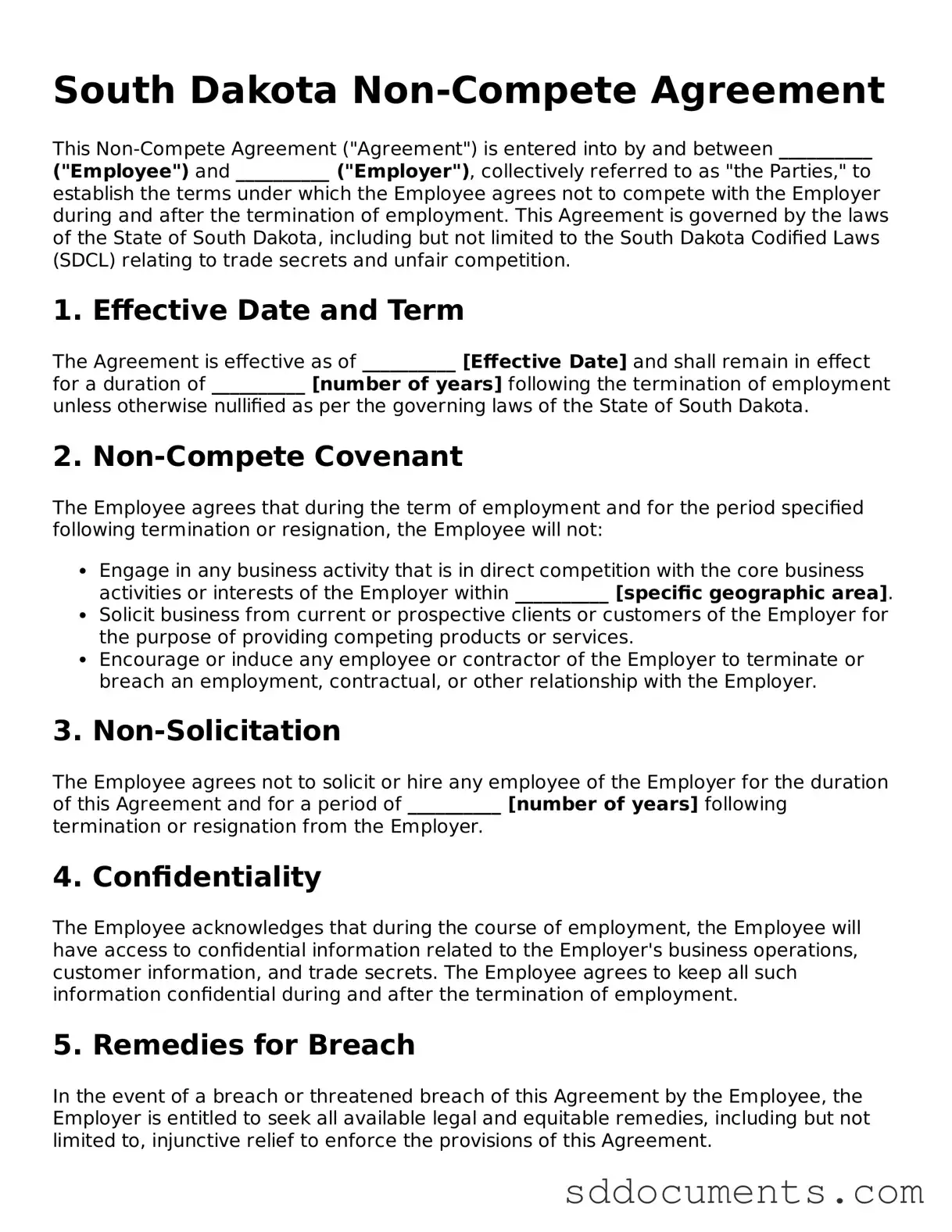Guidelines on Utilizing South Dakota Non-compete Agreement
Filling out the South Dakota Non-compete Agreement form is a straightforward process. It is essential to ensure that all information is accurate and complete, as this document may have significant implications for both parties involved. Follow the steps below to correctly fill out the form.
- Begin by obtaining the South Dakota Non-compete Agreement form. You can find this form online or request it from a legal professional.
- In the first section, provide the names of the parties involved. This typically includes the employer and the employee.
- Next, indicate the effective date of the agreement. This is the date when the terms of the non-compete will start to apply.
- Clearly define the scope of the non-compete clause. Specify the geographic area where the restrictions will apply, as well as the type of work that is prohibited.
- Include the duration of the non-compete period. This is the length of time the employee is restricted from engaging in competitive activities after leaving the company.
- Review any additional terms or conditions that may be relevant. This could include compensation for the employee during the non-compete period.
- Both parties should sign and date the agreement. Ensure that signatures are clear and legible.
- Finally, make copies of the signed agreement for both parties to retain for their records.
After completing these steps, both parties should have a clear understanding of their rights and obligations under the agreement. It is advisable to consult with a legal expert to ensure that the document complies with South Dakota law and effectively protects the interests of both parties.
